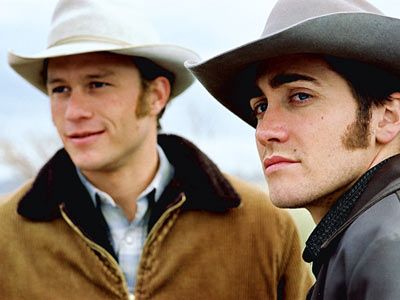 This is post is so, so, so overdue that I have decided to turn that into a good thing. Indeed, I will argue that my procrastination can be seen as a form of public service to GetReligion readers.
Why? The Atlantic Monthly is a wonderful magazine and is must reading for anyone interested in religion and public life. But some of those articles are just so long, too long even, when it comes time to reading them on a computer screen. So if you are not a subscriber, I urge you -- the timing is perfect -- to find a subscriber and urge them to give you that copy of the January-February issue that they were just about to pitch into the recycle bin. It's the one with Pope Benedict XVI on the cover (more on that in a moment).
This is post is so, so, so overdue that I have decided to turn that into a good thing. Indeed, I will argue that my procrastination can be seen as a form of public service to GetReligion readers.
Why? The Atlantic Monthly is a wonderful magazine and is must reading for anyone interested in religion and public life. But some of those articles are just so long, too long even, when it comes time to reading them on a computer screen. So if you are not a subscriber, I urge you -- the timing is perfect -- to find a subscriber and urge them to give you that copy of the January-February issue that they were just about to pitch into the recycle bin. It's the one with Pope Benedict XVI on the cover (more on that in a moment).
There is a very important article in this issue entitled "Tribal Relations" by Steven Waldman, the CEO over at Beliefnet, and John C. Green, the University of Akron professor who is one of America's most quoted experts on political numbers. It is part of a package -- look for the "Values Racket" headline -- that tries to carve up all kinds of Culture War and Red vs. Blue political myths and actually, for me, ends up making the opposite case, underlining the fact that moral and cultural issues are at the heart of American politics these days.
In their article, Green and Waldman produce mini-profiles of what they believe are the 12 religious (or non-religious or even anti-religious) tribes in American politics. The goal is to prove that America is more complex than the old Religious Right vs. Everybody Else matrix. What they end up with is something very close to the point of view argued long ago -- to one degree or another -- by James Davison "Culture Wars" Hunter, evangelical statistics guru George Barna, Gerald De Maio and Louis Bolce and others.
Anyone who has read GetReligion very long will recognize this theory right away: There is the true Religious Right on one side (about 12 percent) and the true-blue secularists on the other side (10 percent or so) and, in between, there is OprahAmerica.
Not everyone will agree with how Waldman and Green have defined the other folks in the Republican and Democratic tribes -- the "heartland culture warriors," the religious left, the "moderate evangelicals," spiritual but not religious people, etc. But it was good to make this attempt, and others should spin their own versions. Anyone seeking compromises on tough moral issues has to venture into this territory, the muddy land in between the rock-ribbed religious voters who define the Republican primaries and the anti-evangelical voters who dominate the Democratic primaries and fundraising.
Here is a sample of the "Tribal Relations" material. Note the reference to "theological restructuring," which is a kind of indirect hat tip to Hunter:
A deep-blue religious left is almost exactly the same size as the religious right but receives much less attention. John Kerry is perhaps one representative of this group, which draws members from many Christian denominations and is a product of the same theological restructuring that created the heartland culture warriors. Members of the religious left espouse a progressive theology (agreeing, for instance, that "all the world's great religions are equally true") and are very liberal on cultural issues such as abortion and gay marriage. About a quarter attend church weekly. The religious left is somewhat liberal on economic policy and decidedly to the left on foreign policy. Its stances on both moral values and the Iraq War -- but especially the latter -- have pushed it further into the Democratic camp. Seventy percent backed Kerry in 2004; 51 percent had backed Gore in 2000. The religious left was the largest -- and the fastest-growing -- single tribe in the Kerry coalition.
 So you may be asking, right about now: Why is there Oscar and Brokeback Mountain art attached to this post?
So you may be asking, right about now: Why is there Oscar and Brokeback Mountain art attached to this post?
That's easy. In the weeks running up to the Academy Awards, the mainstream press has been cranking out stories about the success of this movie and how this shocking "breakout" represents a major change in American culture. The latest version of this story appeared this past week in the big-story slot on page one in USA Today. Thus, reporter Scott Bowles wrote:
... Brokeback Mountain already is The Movie. The film is the punch line of jokes, the subject of Internet parodies and the front-runner for the Oscars on March 5. Oprah plugged the gay-cowboy drama on her show. Howard Stern gave it a thumbs up. "Have you seen Brokeback?" has become a dinner-party Rorschach test of gay tolerance.
Brokeback also is freighted with expectations not foisted on a film in years. It leads a raft of social-issues films that are dominating the awards season. Some hail the picture as the one that will change not only how Hollywood portrays gay characters but also how gay men and lesbians are accepted by mainstream America. Those are mighty claims for a $14 million Western seen by fewer people in the three months since its release than who saw Dancing with the Stars on television last week.
Admirers say the film is erasing Hollywood's homosexual stereotypes and raising consciousness of gay rights. Critics say Brokeback's destiny is to be remembered more for its marketing than its artistic achievements.
This story does -- hurrah -- work in a wide range of viewpoints about the movie. Still, it is yet another example of the trend that it is writing about.
At some point, you have to ask: OK, if $70-plus million at the box office is a sign of American mainstream status, then what is $288 million or even (if you catch my drift) $370 million?
Here's the point. If you apply the Waldman and Green matrix to movies instead of to politics, then you could reach this conclusion. Brokeback Mountain is a solid, artistic niche movie for the hard left in American life -- a niche that is larger than the hard right (and is dominated by Oscar voters and Hollywood's most loyal supporters in blue zip codes).
So who will make more movies for the other tribes? Who will find a way to make movies that combine the tribes, yet are artistic enough for Hollywood to honor? That's the question people need to ask if they want to make mainstream movies that make lots of money and force Hollywood people to grit their teeth when it comes time for the Oscar voting.
So what else is in that must-save January-February issue of The Atlantic?
There is E.J. Dionne Jr.'s poignant attempt to wish away the Culture Wars. There is Caitlin Flanagan's "Are You There God? It's Me, Monica," in which she seems to yearn for some kind of sexual morality in post-feminist America, but dares not propose one. And there is even the cover story, Paul Elie's magnificent "The Year of the Two Popes," which offers some critical insights into the differences between John Paul II and Benedict XVI, instead of rehashing all of the places where their views were so similar.
Like I said, find someone to give you a real copy of this magazine printed on high-quality dead tree pulp. You'll get eye strain trying to read all of this wonderful stuff on a computer screen.
